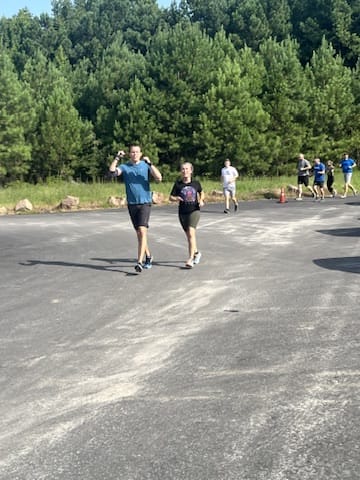Table of Contents
Focus Keyword: Sandbag Training
Introduction
Sandbag training has rapidly gained popularity in the fitness world due to its versatility, effectiveness, and simplicity. Whether you’re a seasoned athlete or a beginner looking to build strength, sandbag training can help you achieve your fitness goals. In this comprehensive guide, we’ll explore the benefits of sandbag training, how to get started, compare some of the best products on the market, and show you where to get them at the best prices.
What is Sandbag Training?

Sandbag training involves using a weighted bag filled with sand as a tool for resistance training. Unlike traditional weights, the shifting sand within the bag creates an unstable load, which forces your muscles to work harder to stabilize the weight. This type of training can be adapted for various exercises, making it an excellent choice for building functional strength, endurance, and core stability.
Benefits of Sandbag Training
1. Versatility: Sandbags can be used for a wide range of exercises, including squats, deadlifts, presses, carries, and throws. This versatility allows you to target different muscle groups and perform full-body workouts.
2. Functional Strength: The instability of the sandbag mimics real-life challenges, such as carrying groceries or lifting heavy objects, making it an effective way to build functional strength.
3. Core Stability: Because the sandbag’s weight shifts as you move, your core muscles are constantly engaged to maintain balance. This results in improved core strength and stability.
4. Portability: Sandbags are easy to transport and can be used in various settings, from your home gym to an outdoor park. They are also more affordable than traditional weightlifting equipment.
5. Increased Caloric Burn: The dynamic nature of sandbag training makes it a high-intensity workout, leading to increased calorie expenditure and improved cardiovascular health.
Getting Started with Sandbag Training
To start sandbag training, you’ll need a sandbag, some filler material (like sand or pea gravel), and knowledge of a few basic exercises. Here are the steps to get you going:
1. Choose the Right Sandbag: Look for a sandbag that is durable and has multiple handles to accommodate different exercises. Below, we’ll review some of the top sandbag options on the market.
2. Fill the Bag: Most sandbags come with filler bags that you can fill with sand, gravel, or another heavy material. Start with a manageable weight and gradually increase it as you get stronger.
3. Learn the Basic Moves: Start with simple exercises like sandbag squats, deadlifts, and shoulder presses. As you become more comfortable, you can incorporate more complex movements like sandbag cleans and snatches.
4. Progress Gradually: As with any fitness routine, it’s important to progress gradually. Increase the weight of your sandbag or the complexity of your exercises as you gain strength and confidence.
Product Review: Best Sandbags for Training
When it comes to selecting a sandbag for training, quality and durability are key. Here are some of the top sandbag options available:
1. Rogue Sandbags
- Price: From $55
- Where to Buy: Rogue Fitness
- Review: Rogue Sandbags are known for their durability and quality construction. Made from military-grade Cordura fabric, they are designed to withstand heavy use. With multiple handles and a range of sizes, they are perfect for beginners and advanced users alike.
2. Brute Force Sandbags
- Price: From $99
- Where to Buy: Brute Force
- Review: Brute Force Sandbags are some of the most versatile on the market. They come with multiple filler bags, allowing you to adjust the weight easily. The materials are rugged, and the bags come in various colors and sizes to suit different training needs.
3. Rep Fitness Sandbags
- Price: From $69.99
- Where to Buy: Rep Fitness
- Review: Rep Fitness Sandbags offer excellent value for money. They are made from high-quality materials and come with multiple handles for versatile training options. The filler bags are double-sealed, ensuring that sand stays securely inside.
4. SKLZ Super Sandbag
- Price: From $79.99
- Where to Buy: SKLZ
- Review: The SKLZ Super Sandbag is a great option for those new to sandbag training. It’s designed with multiple handle grips, and the weight can be adjusted by adding or removing filler bags. The material is durable enough for regular use, and it’s suitable for both indoor and outdoor workouts.
Sandbag Training Workouts
To help you get started, here’s a sample sandbag workout that targets multiple muscle groups and enhances core stability:
1. Sandbag Squats (3 sets of 12 reps): Hold the sandbag across your shoulders and perform squats, ensuring your back remains straight and your core engaged.
2. Sandbag Deadlifts (3 sets of 10 reps): Place the sandbag on the ground, stand with feet shoulder-width apart, and lift the sandbag by hinging at the hips and keeping your back straight.
3. Sandbag Shoulder Press (3 sets of 8 reps): Press the sandbag overhead from a standing position, focusing on keeping your core tight.
4. Sandbag Lunges (3 sets of 10 reps per leg): Hold the sandbag in front of your chest and perform alternating lunges.
5. Sandbag Carries (3 sets of 30 meters): Pick up the sandbag and walk for 30 meters. Focus on maintaining good posture and a steady pace.
Where to Buy Sandbags for Training
You can purchase sandbags from various online retailers, including:
- Rogue Fitness: Known for high-quality fitness equipment, Rogue Fitness offers a range of sandbags that cater to different needs.
- Brute Force: Specializes in functional fitness gear, including top-rated sandbags.
- Amazon: A convenient option with a variety of sandbag brands and competitive pricing. Ensure you check product reviews and ratings before purchasing.
Advanced Sandbag Training Techniques for Maximum Gains

Focus Keyword: Sandbag Training
After mastering the basics of sandbag training, many fitness enthusiasts seek to elevate their routines by incorporating advanced techniques. These techniques not only challenge your physical strength and endurance but also enhance your mental toughness and agility. In this section, we will delve into advanced sandbag training methods, the science behind their effectiveness, and how you can integrate them into your workout regimen for maximum gains.
Understanding the Science Behind Sandbag Training
Before diving into the advanced techniques, it’s essential to understand why sandbag training is so effective. Traditional weights like dumbbells and barbells offer consistent resistance throughout an exercise. In contrast, the dynamic nature of sandbags—where the load continuously shifts—requires your body to adapt on the fly. This unpredictability engages multiple muscle groups simultaneously, leading to:
- Improved Neuromuscular Coordination: As your body adapts to the shifting load, your neuromuscular system learns to respond more quickly and efficiently, improving overall coordination.
- Enhanced Core Stability: The constant need to stabilize the sandbag forces your core muscles to work harder, leading to a stronger, more resilient core.
- Increased Functional Strength: Unlike isolated exercises, sandbag training simulates real-world movements, enhancing your ability to perform everyday tasks with greater ease and less risk of injury.
- Mental Toughness: The unpredictability of sandbag training requires focus and determination, helping to build mental toughness and resilience over time.
Now that we’ve covered the basics, let’s explore some advanced sandbag training techniques that can help you push your limits.
Advanced Sandbag Exercises to Challenge Your Limits
1. Sandbag Clean and Press Complex
The clean and press is a staple in strength training, and when performed with a sandbag, it becomes even more challenging. This exercise targets the entire body, focusing on the legs, core, shoulders, and arms.
- How to Perform:
- Start with the sandbag on the ground.
- Use a powerful hip drive to lift the sandbag to shoulder height (the clean).
- From this position, press the sandbag overhead, fully extending your arms.
- Lower the sandbag back to shoulder height and then return it to the ground.
- Advanced Variation: To increase difficulty, add a front squat before the press, or perform the entire sequence explosively to engage fast-twitch muscle fibers.
2. Sandbag Turkish Get-Up
The Turkish Get-Up is an advanced exercise that improves mobility, stability, and overall body coordination. Using a sandbag instead of a kettlebell or dumbbell adds an extra challenge due to the unstable nature of the load.
- How to Perform:
- Start lying on your back, holding the sandbag with one hand, and keep your arm extended.
- Bend the knee on the same side as the hand holding the sandbag.
- Using your opposite arm and leg, slowly rise to a standing position while keeping the sandbag overhead.
- Reverse the movement to return to the starting position.
- Advanced Variation: Increase the weight of the sandbag or perform the exercise with minimal support from your non-working hand and leg.
3. Sandbag Overhead Carry
Carrying a heavy sandbag overhead is a true test of core strength, shoulder stability, and mental toughness. This exercise is particularly effective for building endurance and resilience in the upper body and core.
- How to Perform:
- Clean and press the sandbag overhead.
- Once stable, begin walking forward while keeping the sandbag locked out overhead.
- Maintain a tight core and avoid letting the sandbag drift forward or backward.
- Advanced Variation: Perform the overhead carry on an uneven surface or incorporate walking lunges to increase the challenge.
4. Sandbag Bear Hug Squat
The bear hug squat is a powerful lower-body exercise that also engages the upper body, particularly the arms and chest. Holding the sandbag close to your body adds an element of core engagement and grip strength.
- How to Perform:
- Hold the sandbag close to your chest with both arms wrapped around it.
- Squat down, keeping your chest up and back straight.
- Push through your heels to return to a standing position.
- Advanced Variation: Add a pause at the bottom of the squat to increase time under tension, or perform the exercise on one leg at a time (pistol squats).
5. Sandbag Rotational Lunge
Rotational movements are crucial for athletes and anyone looking to improve functional strength. The sandbag rotational lunge targets the legs, core, and rotational muscles, making it an excellent exercise for improving overall athletic performance.
- How to Perform:
- Hold the sandbag by the handles with both hands.
- Step forward into a lunge while simultaneously rotating the sandbag across your front leg.
- Return to the starting position and repeat on the other side.
- Advanced Variation: Perform the rotational lunge in a reverse lunge pattern, stepping backward instead of forward, to target the muscles differently.
Integrating Sandbag Training into Your Routine
Advanced sandbag exercises can be integrated into your existing workout routine or performed as a standalone workout. Here’s how you can incorporate these movements effectively:
1. Warm-Up Properly
Before starting your sandbag workout, ensure that you are adequately warmed up. Dynamic stretches, mobility exercises, and light cardio can help prepare your muscles and joints for the intense work ahead.
2. Combine with Other Training Modalities
Sandbag training complements other forms of training, such as weightlifting, bodyweight exercises, and cardio. Consider combining sandbag exercises with these modalities to create a well-rounded workout.
Example Workout:
- Warm-Up: 10 minutes of dynamic stretching and light cardio
- Circuit 1: Sandbag Clean and Press (3 sets of 8 reps), Push-Ups (3 sets of 15 reps), Jump Rope (3 sets of 60 seconds)
- Circuit 2: Sandbag Turkish Get-Up (3 sets of 5 reps per side), Pull-Ups (3 sets of 10 reps), Mountain Climbers (3 sets of 30 seconds)
- Circuit 3: Sandbag Bear Hug Squat (3 sets of 10 reps), Plank (3 sets of 60 seconds), Burpees (3 sets of 15 reps)
- Cool Down: 10 minutes of static stretching
3. Focus on Progressive Overload
To continue making gains, focus on progressively increasing the weight of your sandbag, the number of repetitions, or the complexity of the exercises. This principle of progressive overload ensures that your muscles are constantly challenged, leading to increased strength and endurance over time.
4. Monitor Your Form
Given the dynamic nature of sandbag training, maintaining proper form is crucial to avoid injury. Always prioritize quality over quantity. If you find that your form is breaking down, reduce the weight or number of repetitions to maintain control.
Recovery and Nutrition for Sandbag Training
Advanced training routines place significant stress on the body, making recovery and nutrition paramount. Here are some tips to ensure you recover effectively and fuel your body properly:
1. Prioritize Recovery
Incorporate active recovery days into your routine. Activities like light jogging, swimming, or yoga can help reduce muscle soreness and improve flexibility without overloading your muscles.
2. Stay Hydrated
Sandbag training can be intense, especially when combined with other high-intensity exercises. Ensure you stay hydrated before, during, and after your workout to maintain performance and prevent dehydration.
3. Fuel with Proper Nutrition
Your diet plays a crucial role in your recovery and performance. Focus on consuming a balanced diet rich in protein, complex carbohydrates, and healthy fats. Protein is particularly important for repairing muscle tissue, while carbohydrates replenish glycogen stores, and fats support hormone production.
4. Use Supplements Wisely
Consider incorporating supplements to support your training. Protein powders, branched-chain amino acids (BCAAs), and omega-3 fatty acids can aid in muscle recovery and reduce inflammation. Always consult with a healthcare professional before starting any new supplement regimen.
The Mental Game: Building Resilience with Sandbag Training
Sandbag training isn’t just about physical strength—it also builds mental resilience. The challenging nature of the exercises forces you to push past discomfort and develop a stronger mindset. Here’s how sandbag training can help you build mental toughness:
1. Embrace the Challenge
The unpredictable nature of the sandbag means you never quite know what to expect during a workout. Embrace this uncertainty as an opportunity to challenge yourself and grow. Over time, you’ll find that your ability to cope with difficult situations—both in and out of the gym—improves.
2. Set Goals and Track Progress
Setting clear, achievable goals is essential for staying motivated. Whether you aim to increase the weight of your sandbag, improve your form, or complete a certain number of repetitions, tracking your progress helps you stay focused and driven.
3. Practice Mindfulness
Sandbag training requires a high level of concentration. By practicing mindfulness during your workouts—focusing on your breathing, form, and the movement of the sandbag—you can improve your mental clarity and reduce stress.
4. Celebrate Small Wins
Don’t forget to celebrate your achievements, no matter how small they may seem. Completing a challenging workout, mastering a new exercise, or hitting a personal best are all milestones worth acknowledging. These small victories contribute to a positive mindset and encourage long-term commitment to your training.
Conclusion
Advanced sandbag training offers a unique and challenging way to enhance your fitness routine. By incorporating these techniques into your workouts, you can build functional strength, improve core stability, and develop mental toughness. Remember, the key to success is consistency, progression, and a commitment to pushing your limits.
Whether you’re training at home, at the gym, or outdoors, sandbag training provides the versatility and effectiveness you need to achieve your fitness goals. Invest in a high-quality sandbag from reputable sources like Rogue Fitness or Brute Force, and start experiencing the benefits of this dynamic training method.
For more advanced workout ideas, training tips, and gear recommendations, be sure to explore other articles on our blog. Your journey to peak fitness starts here!
DoFollow Links to External Resources:
Internal Links:
This new section not only adds depth to your sandbag training blog but also includes valuable information that will appeal to advanced fitness enthusiasts, helping to drive more traffic to your affiliate sites.



